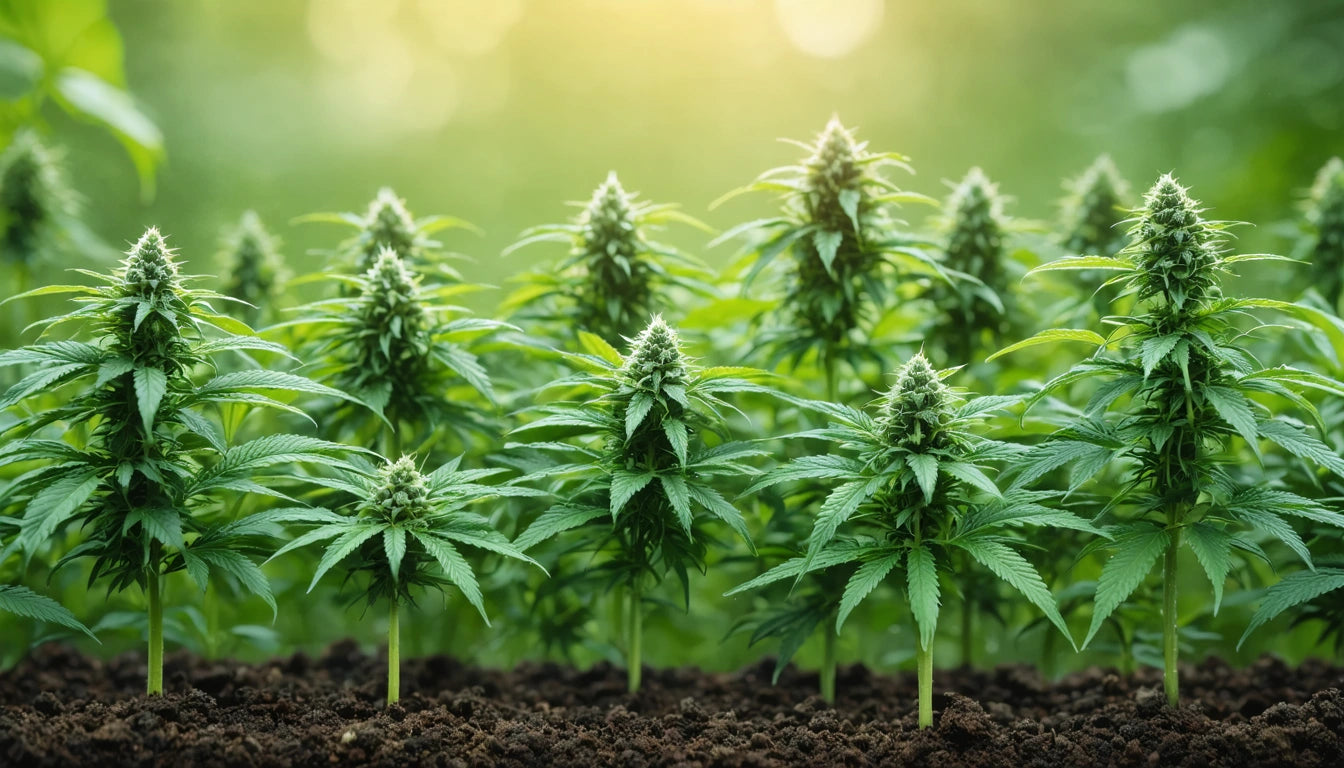Table of Contents
Understanding and Managing Muscle Twitching When High: Causes and Solutions
If you've ever wondered "why do I twitch when I'm high," you're not alone. Muscle twitching when high is a common phenomenon that many cannabis users experience. These involuntary movements can range from subtle finger twitches to more noticeable body jerks that might feel concerning or uncomfortable. Understanding why these twitches occur and how to manage them can help ensure a more enjoyable cannabis experience.
Why Twitching Occurs When You're High
Cannabis affects the central nervous system in multiple ways, primarily through its interaction with the endocannabinoid system. This interaction can lead to various physical responses, including muscle twitching or spasms.
The Science Behind Cannabis-Induced Twitching
When THC binds to cannabinoid receptors in the brain, it can influence areas responsible for motor control. According to research on cannabis-induced shaking, THC can temporarily alter how neurons communicate with muscles, resulting in spontaneous contractions that manifest as twitches.
Additionally, cannabis can affect neurotransmitters like dopamine and glutamate, which play crucial roles in muscle control and movement regulation. The temporary imbalance of these chemicals can trigger muscle spasms when high.
Common Triggers for Cannabis-Induced Muscle Spasms
Several factors can increase the likelihood or intensity of twitching when high:
- Potency and dosage: Higher THC concentrations are more likely to cause twitching
- Consumption method: Rapid-onset methods like dabbing or vaping concentrated products can intensify effects
- Individual sensitivity: Some people are naturally more prone to muscle spasms
- Anxiety or stress: Mental state can amplify physical symptoms
- Dehydration: Insufficient water intake can worsen muscle responses
- Caffeine consumption: Combining cannabis with stimulants can increase twitching
As noted in this article on varying cannabis effects, individual responses to cannabis can differ dramatically based on factors like metabolism, tolerance, and body chemistry.
Managing and Reducing Twitching When High
If you're experiencing uncomfortable muscle spasms when high, several approaches can help minimize these effects:
Immediate Relief Techniques
- Hydration: Drink plenty of water before, during, and after cannabis use
- Gentle stretching: Slow, deliberate stretches can help relax tense muscles
- Deep breathing: Controlled breathing helps reduce anxiety that may worsen twitching
- CBD supplementation: CBD may counteract some THC effects, including muscle spasms
- Change positions: Sometimes simply adjusting how you're sitting or lying can help
For consistent cannabis users, investing in quality preparation tools like electric herb grinders for even consistency can help ensure more predictable dosing, potentially reducing adverse effects like twitching.
When to Be Concerned About Twitching
While twitching when high is usually harmless, certain situations warrant attention:
- Severe or prolonged twitching that doesn't subside as the high wears off
- Twitching accompanied by difficulty breathing or chest pain
- Muscle spasms that cause significant pain or impair movement
- Twitching that occurs even when not using cannabis
As this resource on cannabis-induced shaking explains, most cannabis-related muscle responses are temporary. However, if you experience severe symptoms, it's advisable to consult a healthcare professional.
Prevention Strategies for Comfortable Cannabis Experiences
To minimize the likelihood of experiencing uncomfortable twitches when high:
Product Selection and Consumption Tips
- Start with lower THC products and gradually increase if needed
- Try balanced THC:CBD ratios, as CBD may moderate THC's effects
- Consider terpene profiles, as some (like myrcene) promote relaxation
- Avoid mixing with alcohol or caffeine, which can intensify twitching
- Stay well-hydrated and nourished before consuming cannabis
According to expert advice on managing your high, creating a comfortable, low-stress environment can significantly reduce the likelihood of experiencing negative side effects like muscle spasms.
For those who find they're particularly sensitive to twitching when high, keeping track of which strains, products, and consumption methods trigger these responses can help identify patterns and avoid problematic situations in the future.
Long-Term Management for Regular Cannabis Users
If you enjoy cannabis but find that twitching is a recurring issue, consider these longer-term approaches:
- Experiment with different strains and cannabinoid profiles
- Try microdosing techniques for more controlled effects
- Consider tolerance breaks to reset your body's response
- Incorporate regular exercise and stretching into your routine
- Ensure adequate magnesium intake, as deficiency can contribute to muscle spasms
Understanding your body's unique response to cannabis is key to managing side effects like twitching. By paying attention to dosage, product selection, and your physical state before consumption, you can significantly reduce the likelihood of experiencing uncomfortable muscle spasms when high, leading to more consistently positive experiences.











Leave a comment
All comments are moderated before being published.
This site is protected by hCaptcha and the hCaptcha Privacy Policy and Terms of Service apply.